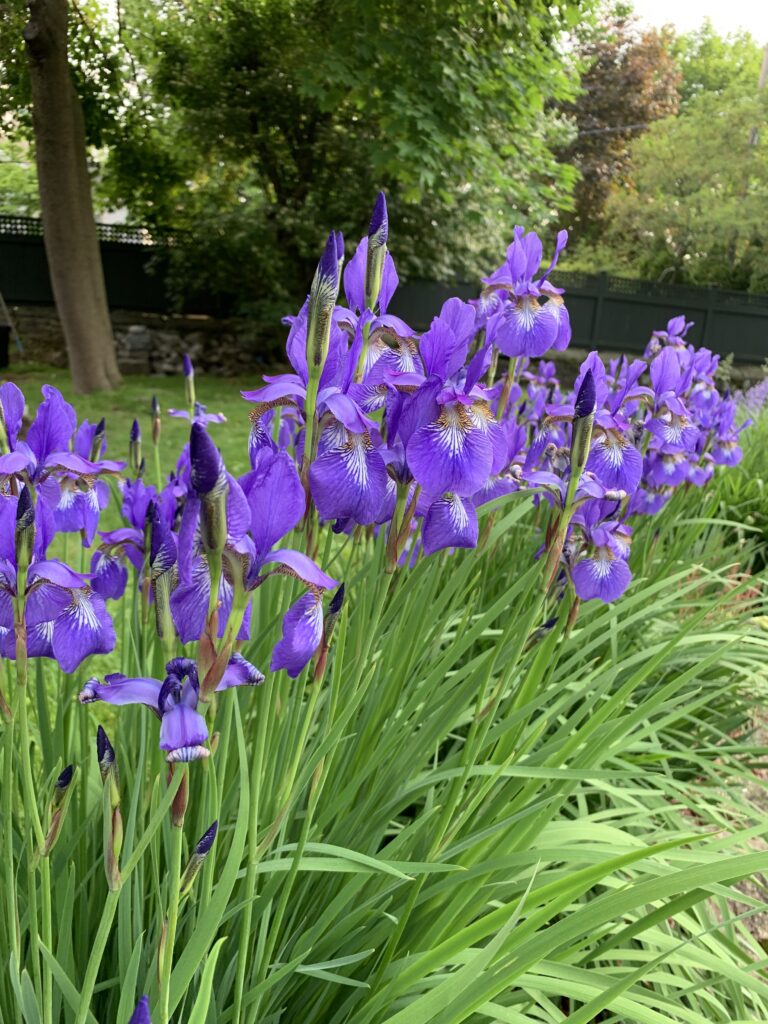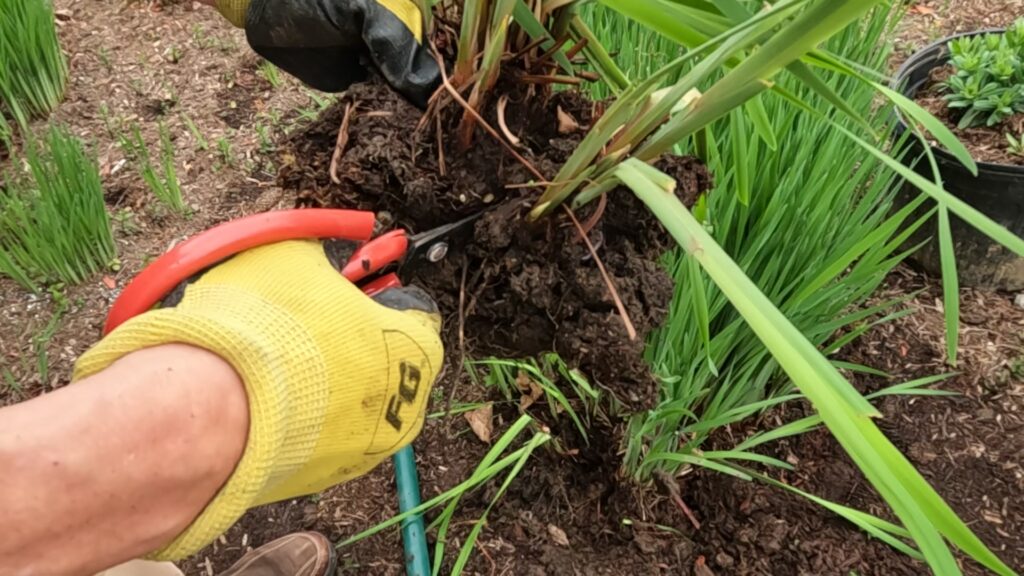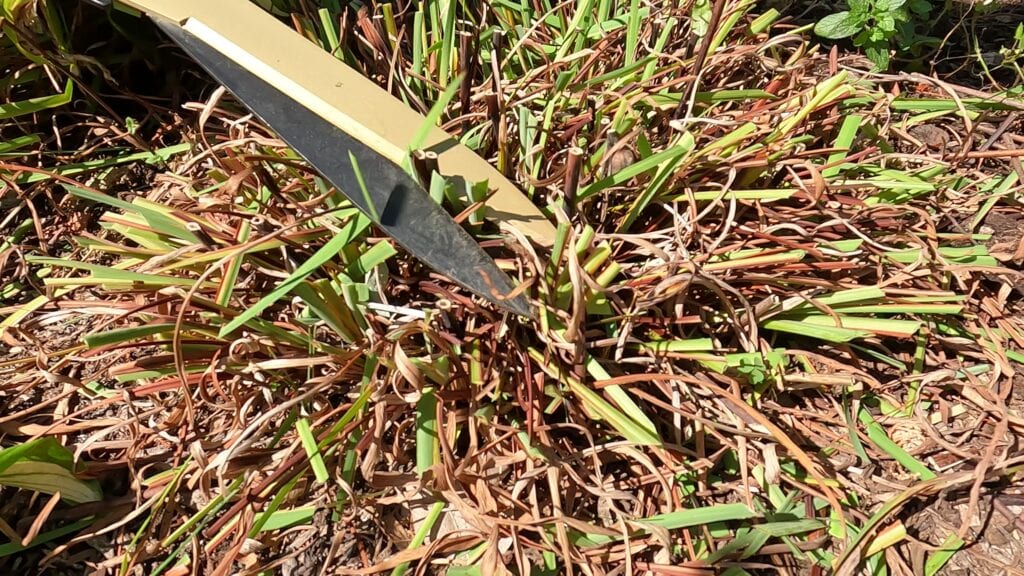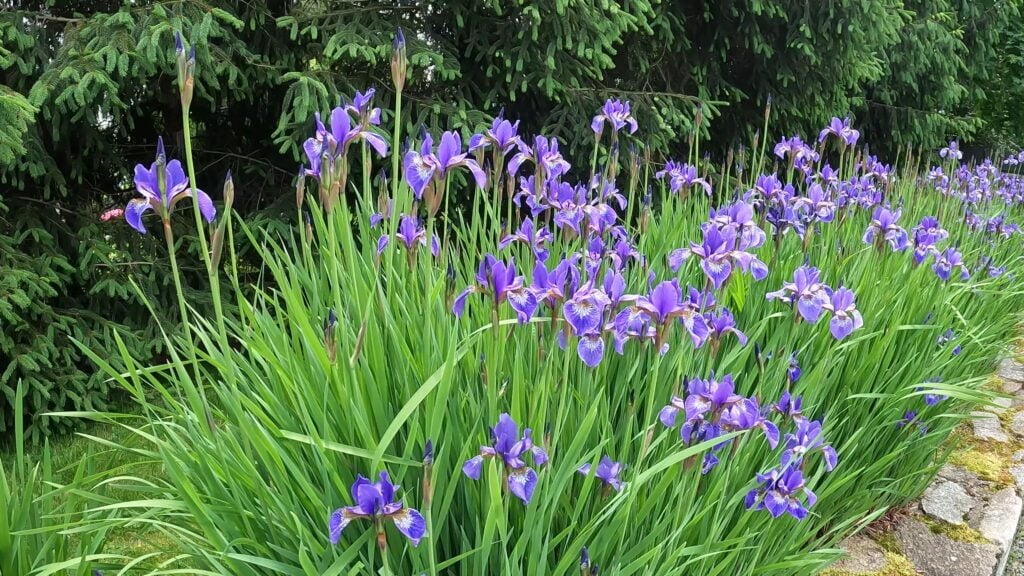Siberian Irises (Iris sibirica) are easy flowering perennials to grow in your garden. And of all the iris varieties, Siberian Irises are the easiest to care for because they are low maintenance and typically pest and disease free. Once your Siberian irises are established, you will be rewarded with gorgeous flowers year after year even if you don’t do anything- perfect for the lazy gardener.

Just plant your Siberian iris in a sunny location with moist, well-drained soil and it will automatically flower beautifully. The only annual maintenance is to cut back irises in the Fall to prepare them for the following year. Here is a beginner’s guide on how to care for your Siberian Irises.
Siberian Irises Planting Basics
| Name | Siberian Irises |
| Botanical Name | Iris sibirica |
| Flower Color | Many Colors- Purple, Pink, Yellow, Blue, White, Orange |
| Height | 24-36 inches |
| Sun | Full Sun to Light Shade |
| Soil | Moist, Well-Drained |
| Bloom Time | Early summer |
| Zones | 3-8 |
| Plant Depth | Plant 1 inch deep |
| Plant Spacing | 12 to 24 inches apart |
| Toxic to Cats and Dogs | Toxic |
Siberian Irises (Iris sibirica): Size
Siberian Irises grow to 24-36 inches tall.
Planting Your Siberian Irises
Where to Plant Siberian Irises (Iris sibirica)
Siberian Irises are best planted in sunny locations receiving at least 6-8 hours of sunlight per day. Your Siberian iris will thrive if you plant it in a light shade location but it will not flower as robustly. They prefer moist, well-drained soil.
| Sun | Full Sun to Light Shade |
| Soil | Moist, Well-Drained |
How to Plant Siberian Irises
Dig a hole around 1 inch deep. Center the rhizome and cover it with soil. Water thoroughly. Keep up with the watering until roots are established. Use a bulb planter tool to make planting your bulbs easier.
How Deep Should You Plant Siberian Irises?
Plant your Siberian Irises 1 inch deep.
When is the Best Time to Plant Siberian Irises?
The best time to plant your Siberian iris is in the Fall. Make sure you plant your Siberian iris 4 weeks before the first frost to ensure there is enough new root growth before winter.
Dividing Irises
How Often do you need to Divide Irises?
Siberian irises can grow in the same location for many years and don’t need to be divided. However, eventually, it will start to get overcrowded and will benefit from division. I noticed my Siberian irises started to look overcrowded 8 years after planting so that’s when I divided it.

How to Divide Irises
Water the iris you will be dividing (or divide after rain). It’s easier to divide your Siberian iris if the soil is moist. With a shovel, divide your Siberian irises by digging up the entire Iris exposing the roots and rhizomes. Use scissors and a shovel to cut up the iris clump into several divisions. Plant each division in a sunny location with well-drained soil. Water thoroughly. Keep up with the watering until the roots are established.
Check out my article and video for a step-by-step guide on How to Divide Irises
Propagating Your Irises
How to Propagate Siberian Irises (Iris sibirica)
The best way to propagate Siberian irises is by division. Water the iris you will be dividing (or divide after rain). With a shovel, divide irises by digging up the entire Iris exposing the roots and rhizomes. Use scissors and a shovel to cut up the iris clump into several divisions. Plant each division in a sunny location with well-drained soil. Water thoroughly. Keep up with the watering until the roots are established.
Care for Your Siberian Irises
Do You Need to Water Your Siberian Irises every day?
Siberian irises are drought resistant. Once your Siberian irises are established, you don’t need to water them, natural rainfall should be sufficient. However, if you are experiencing drought or a dry spell, do water your Siberian irises.
If you have newly planted Siberian irises, you should keep the soil moist to ensure root growth. I suggest watering newly planted Siberian irises at least 3 times a week.
What to Do with Your Siberian Irises After They Bloom?
Siberian irises don’t need deadheading after they bloom. Your Siberian irises will not benefit from deadheading since Siberian irises don’t rebloom. The only reason for deadheading Siberian irises is if you want to tidy up your irises by removing the dead flowers. Make sure to keep the leaves of your Siberian iris intact since it’s vital for the leaves to continue photosynthesizing even after bloom so it will continue to feed the iris rhizome.
How Often Should You Fertilize Your Siberian Irises?
Fertilize your Siberian irises once in the Spring.
What Fertilizer Should You Use on Your Siberian Irises?
Use a balanced fertilizer on your Siberian irises.
Troubleshooting Your Siberian Irises
Are Siberian Irises Deer Resistant?
Siberian Irises are deer-resistant plants. I’ve had Siberian irises in my garden for 2 decades now and I’ve never had any problems with deer (Trust me, I do get plenty of deer in my garden!). I also find that squirrels and rabbits don’t bother Siberian irises. Plant Siberian irises freely in your garden without fear of garden critters!
Are Siberian Irises Toxic to Dogs and Cats?
Siberian Irises are toxic to dogs and cats. According to the ASPCA, Irises contain Pentacylic terpenoids (zeorin, missourin and missouriensin) which are toxic to dogs and cats. It can cause vomiting and diarrhea. Iris rhizomes contain the highest level of Pentacylic terpenoids.
What are the common problems of your Siberian Irises?
Siberian Irises are typically pests and disease free. While bearded irises are commonly afflicted with iris borers.
Preparing Your Siberian Irises for Winter

How Should You Prepare Your Siberian Irises for Winter?
To prepare your Siberian iris for winter, you need to cut back irises in the Fall by removing the stems and leaves. Cut your irises down so that only around 2 inches of foliage are left. Wait until after 3-4 frosts when the iris leaves have completely died off before cutting back irises. It’s important that you leave the leaves intact for a few weeks after the bloom dies so it can deliver much needed energy to the rhizomes for next year.
Check out my article and video for the step-by-step guide on how to cut back irises
You May Also Be Interested in These Iris Plant Care Guide
Beginner’s Guide: How to Divide Irises (video)

